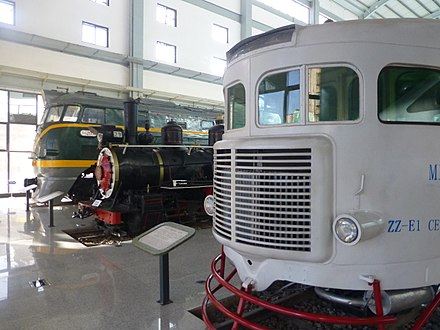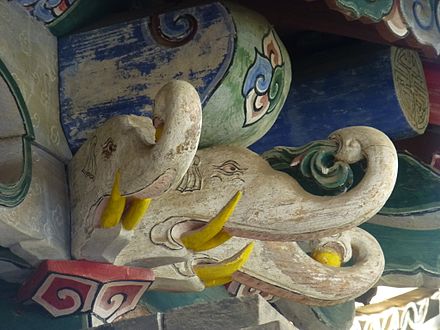Yunnan tourist trail
Yunnan tourist trail
This itinerary describes a popular north-bound route along national highway G214, known in Chinese as 滇藏线. This route covers some of lushest scenery and best preserved traditional cities in Yunnan. There are other popular destinations in Yunnan which are not covered here, notably the tropical paradise Xishuangbanna in the south at the Laotian border and the trip west toward Ruili at the border with Myanmar (Burma).
The northern end of this route is in a largely Tibetan-speaking area that was once part of the Tibetan province of Kham and today is right on the border of Tibet, so this route can be part of an Overland to Tibet journey.
The big attractions of this route are as follows:
- Kunming, provincial capital, transport hub, and starting point for this route.
- The lovely old cities of Dali and Lijiang, both former capitals of small kingdoms and both major tourist towns today
- Sensational trekking areas, notably Tiger Leaping Gorge near Lijiang or, going further afield, Three parallel rivers
- Mountainous areas and Tibetan peoples in Northern Yunnan, around Zhongdian and Deqin
The route is mostly uphill. The starting point, Kunming, is at 2000 meters (nearly 7,000 feet), already considerably higher than Britain's highest peak Ben Nevis or America's "mile high city" of Denver, Colorado. From there, each stop is higher, all the way to Deqin which is at 3500 m (roughly 11,500 feet), about the same as Lhasa or Cuzco. It is certainly necessary to be cautious about altitude sickness on this route, but most travellers will be just fine if they spend a few days in each major destination, giving their bodies time to acclimatise before going higher.
Most travellers will find it easy to schedule in a way that avoids altitude sickness, since the various places on the route are all interesting and they feel quite different to the traveller:
- Kunming is a major Chinese city and has been for hundreds of years; it has the strange mix of fascinating history and frantic modernity common to all such cities. As a large city and provincial capital, it also has a good range of museums, theaters, etc.
- Dali feels like a backpacker hangout, similar to Yangshuo or various destinations on the Banana Pancake Trail in Southeast Asia. There are Western restaurants and tourists everywhere.
- Lijiang is among the most beautiful cities in China and the Chinese have certainly noticed; there are Chinese tour groups everywhere.
- Zhongdian (now Shangrila) feels more like a Tibetan town than a city in central China.
- Deqin is pretty much purely Tibetan.
What they all have in common are mountainous scenery, interesting architecture, ethnic minorities and lovely handicrafts — wood, silver and especially fabric items. See also: Minority cultures of China
Getting to Kunming

- By air
- from any major city in China, with direct flights in many cases
- from Southeast Asia; see Discount airlines in Asia
- from India; there are direct flights from at least Delhi and Kolkata
- By train
- from the north, from Chengdu
- from the northeast, from central China, via Guiyang
- from the southeast, via Nanning See Hong Kong to Kunming overland for other routes within China.
Overland from Southeast Asia
The nearest SE Asian neighbour, Lao Cai, Vietnam allows you to walk over the border, to Hekou. Then plenty of buses (fares ranging from ¥85 to 120) to Kunming. A very lively and hassle free overland crossing.
From Luang Prabang, Laos night sleeper buses take you to Kunming for about $50 to 60 US but the ride is very long and tiring and you will miss out on southern Yunnan, which is one of the most interesting areas of the province. Better to go slow, spend a night in Mengla or Menglun to check out the Menglun botanical gardens. Then consider:
- Westward via Jinghong and Menghai to Menglian and onwards to Lincang and Dehong, Ruili, Tengchong, Baoshan, etc.
- North-north-westward via Simao to Pu'er, then either:
- North-north-eastward via the road along the Laos border. This is spectacular mountainous country with some great silverware still being sold in markets along the way. You will pass the Black River. Do try to stop somewhere and visit some small villages. This road will bring you up to the back of the Yuanyang Rice Terraces, perched up above the Red River which flows from Dali to Haiphong in Vietnam via Hekou and Hanoi. From there you can turn toward Vietnam, Dali, Shiping, Jianshui, Gejiu, Mengzi, the rest of Honghe Prefecture, or east in to little visited Wenshan.
See Banana Pancake Trail for related routes within Southeast Asia.
Kunming to Dali
Kunming to Dali is now served by a 2-hour express train service. You can purchase train tickets in the train station or online (Like Ctrip).
Alternately, it is five hours by bus, or there is a slower train. Both used to be quite popular with tourists, but except perhaps for those on tight budgets most now take the express train. Unfortunately, the slow train is also popular with thieves; watch your belongings.
The train and most buses (even ones that say "Dali") deliver you not to Dali Old Town but to Xiaguan, the nearby capital of Dali Prefecture. See the Dali article for information on the rest of the way.
This route somewhat overlaps the Burma Road built during World War II and running from Kunming to Lashio in Myanmar. Not much of the old road is left, but bits of it and some milestones are still visible.
Dali to Lijiang
Train takes 2 hours from Dali Xiaguan to Lijiang.
Bus takes 2½ hours when taking the newly complete express way, 4 hours by the old route. Ask the driver before boarding.
For a taste of a "real" old town, stop by Shaxi just off the road, halfway in between. Ask the bus driver to drop you off at Jianchuan and take a shared ride van (10 Yuan) to Shaxi.
There is also a comfortable 10-hour overnight bus direct from Dali to Zhongdian. Taking this when headed north may not be the best choice since you miss some great scenery by traveling at night, it bypasses Lijiang, and the rapid change from Dali's 2000 m to Zhongdian's 3200 m risks altitude sickness. However, it can save time and hotel costs for southbound travellers.
Lijiang to Zhongdian
This is 4-hour bus trip. The scenery is great; it includes mountains, terraced fields, picturesque villages and the upper reaches of the Yangtze river.
If trekking is your ambition, stop by half way at Hu Tiao Xia Zhen (Tiger Leaping Gorge Town) to trek the famous Tiger Leaping Gorge.
Zhongdian to Deqin
It takes 4 hours, but the travel time will be further reduced when the next tunnel near Deqin is opened. This is a bus trip through sensational mountain scenery; Zhongdian is at 3200 meters (about 10,500 feet), Deqin at 3500 m (11,500 ft), the highest pass at 4300m. It is beautiful but somewhat scary. In winter, the road is sometimes closed and is not recommended even if it is open.
Beyond Deqin
Going beyond Deqin, you will enter the Tibet Autonomous Region (foreigners entering Tibet need a permit). The next stop is the traditional salt town of Yanjing. Further on is the junction town, Markam, where this route merges with the Sichuan Tibet Road (see Overland to Tibet).
It is also possible to branch off from this route at Shangri-la to Yading (8 to 10 hours) or at Lijiang to Lugu Lake (4½ to 7 hours). Either way will lead you to the Sichuan capital of Chengdu.
Related: China
